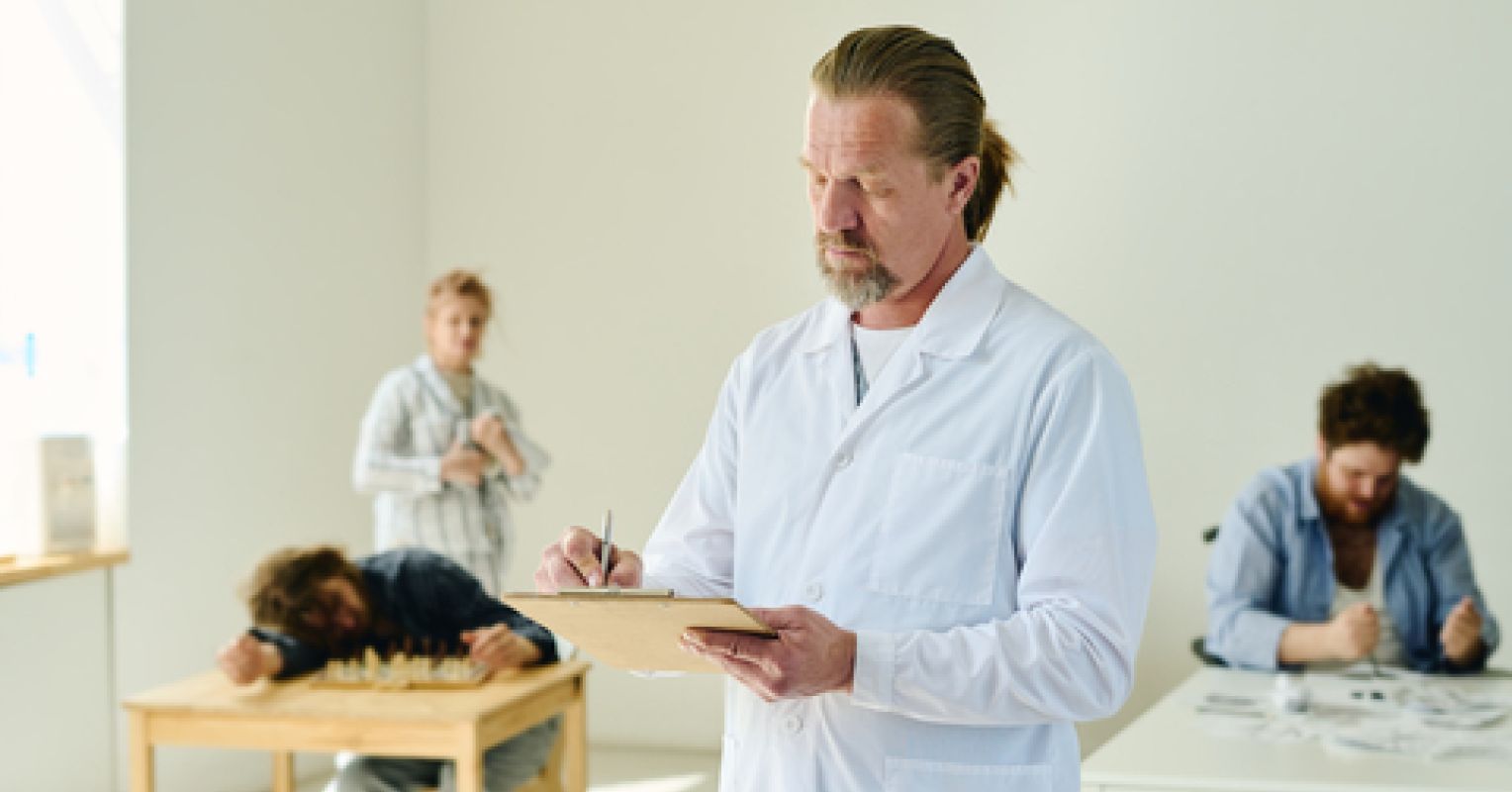970x125
Lately, in the blur of activities surrounding the release of my book The Devil’s Castle, I find myself, in readings and interviews, answering the same questions. In one bookstore, a couple wandered in for coffee, listened for a second, and not only sat down to hear the rest, but got in line at the end. They asked if I believe psychiatric methods can really get better.
I answer this question almost every day: Yes. Yes, they can.
Not only can things get better, but they’ve also been better. Many smart, good people have looked at their time’s ways of dealing with mental distress and found a superior way.
Psychiatry isn’t a linear field of medicine. Rather, it’s been marked by periods of reform and humanity, alternating with periods of reductive thinking and scant resources.
It’s essential to understand this cyclic movement. Right now I’d say we’re somewhere between the two.
Before elaborating on this, let me share another query I get: How can I reveal the things about myself that I do—and, in writing? How do I dare admit that in my life I experience episodes of psychosis, or, as I call them, non-consensus states?
I think the questions connect. Back in the 1980s, when medicine embraced biological-brain disease as the root of psychiatric distress, the medical community argued a disease model of mental problems—the “it’s a disease like any other” model—would reduce stigma. While there is debate over the decrease of stigma, the truth is that a startling number of people not only experience states like depression but also states like hearing voices.
Many people have confessed to me that they’ve hallucinated—some in whispers that felt sacramentally serious. That’s here in the culture that invented the abbreviation “TMI.” Our TikTokers discuss everything from affairs to, er, mishaps involving sanitary products.
Is it so much worse to admit that I sometimes hear birds speaking?
If it is, so be it. Things can only get better when we accept as a culture that minds are naturally, sans anything that might be declared “illness,” wildly diverse.
One subject I have written about was Nazi program T4—a euthanasia campaign that saw gas chambers built for the murder of the neuro-psychiatric, beginning in 1939, with help from eugenicists here in the U.S. Five asylums and an abandoned prison held gas chambers, the first ones developed for mass killing. Eighty to one hundred thousand died.
This program became the first Nazi killing program to target Jews, defining them as “sick.” Their perpetrators created the death camps.
Yet less than a hundred years before T4, an asylum-turned-gas chamber called Sonnenstein was a pinnacle institution in Europe, one of its most enlightened. Sonnenstein’s descent into atrocity shows how large an arc psychiatric care can trace. This atrocity occurred just eighty-odd years ago in a country that at the time had some of the world’s strongest medical ethics laws.
Which leads back to the question of how we can make things better. Sonnenstein’s moral treatment, based on the work of Frenchman Philippe Pinel, worked. Opening as an asylum in 1811, Sonnenstein released many of its “hopeless” cases as cured—a good number of them in the first year.
Back then, Pinel’s moral treatment spread across Europe. It relied on respect, dialogue, and intense interaction between patient and doctor. Pinel saw patients daily and considered it essential to understand their “hopes and dreams.”
Medication existed then. Pinel urged doctors to use it sparingly—rather, he advocated learning enough about each patient to address their needs individually.
We don’t need to go back that far. In 1980, Loren Mosher, a psychiatrist and former head of the NIMH, attempted an experiment he called Soteria, a Greek word meaning deliverance. Patients experiencing their first psychotic episode lived in a home, and received care resembling the moral treatment: respect, calm, and time to make sense of their experiences.
Psychiatry Essential Reads
Mosher set up Soteria as a double-blind study, comparing the outcomes of his patients with those of patients conventionally treated, hospitalized, and heavily medicated. Soteria patients did at least as well, without the toxicities and dependence problems of drugs.
Dorothea Buck, a German Nazi victim and psychiatric activist, developed a method of care she called “trialogue.” Patients, family members, and clinicians met together as equals, in a process focused on conversation.
I’ve read Buck’s letters and narratives from her participants. I’ve also interviewed Thomas Bock, the psychotherapist with whom she collaborated. It’s enlightening. Patients learned how to manage their individual triggers—some took “an extra drop” of medication when they sensed distress coming, then eased off. Others discovered natural ways of self-soothing.
One woman reported that when it came to her overactive head, her words, she could calm it with mint oil, cold water, different forms of touch, and the color green.
I’ve had doctors tell me those methods wouldn’t work with “the kind of patients I see.” But in our system, patients mostly see doctors when they’re in crisis—in full-on psychotic states, deep depressions, extreme anxiety. Buck’s methods aimed to help people from reaching that point.
And Buck’s methods work. I have found relief from them myself.
Despite the darkness of the T4 story, it has been been deeply optimistic to look so closely at the history of thought about the mind. I found heroes, like Fritz Bauer, a German Jew who fled but returned to Germany after the war, to prosecute Nazis. His research uncovered the story of what really happened in the Nazi euthanasia programs. Individuals like Dorothea Buck and Thomas Bock dedicated their lives to giving the distressed a better future.
One patient in a trialogue seminar called the patients’ perspective on care the “frog’s perspective,” with the clinicians’ “the airplane,” flying too high to see. But, she added, “some professionals have discovered that it’s possible to fly the aircraft lower and talk to each other through the flight line.” Perhaps, someday, the plane could even land.



